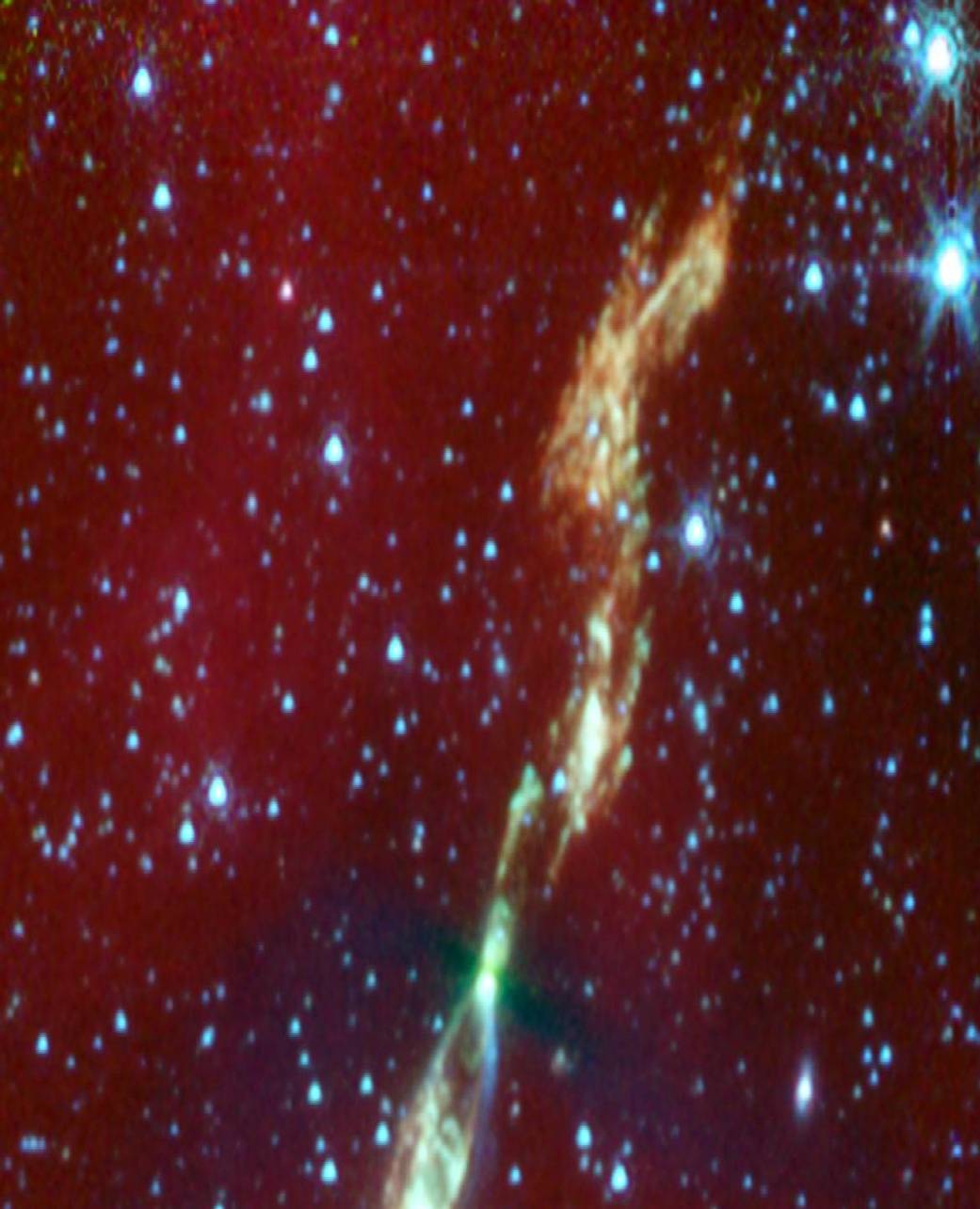A rare, infrared view of a developing star and its flaring jets taken by NASA’s Spitzer Space Telescope shows us what our own solar system might have looked like billions of years ago. In visible light, this star and its surrounding regions are completely hidden in darkness.
Stars form out of spinning clouds, or envelopes, of gas and dust. As the envelopes flatten and collapse, jets of gas stream outward and a swirling disk of planet-forming material takes shape around the forming star. Eventually, the envelope and jets disappear, leaving a newborn star with a suite of planets. This process takes millions of years.
The Spitzer image shows a developing sun-like star, called L1157, that is only thousands of years old (for comparison, our solar system is around 4.5 billion years old). Why is the young system only visible in infrared light? The answer has to do with the fact that stars are born in the darkest and dustiest corners of space, where little visible light can escape. But the heat, or infrared light, of an object can be detected through the dust.NASA/JPL-Caltech/UIUC
1 min read



























